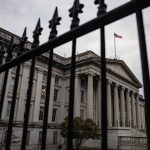Sep 29, 2022 7:40 AM +05:00
VOT Research Desk
Key Insights and Analysis
An increase in the US Personal Consumption Expenditure (PCE) Price Index may keep the exchange rate afloat as the Federal Reserve pursues a restrictive policy, even though USD/CAD snaps the series of higher highs and lows from last week.
The Relative Strength Index (RSI) returns from an extreme reading, raising the possibility of a larger pullback in the exchange rate as a textbook sell signal takes shape. The recent rally in USD/CAD appears to be stalling after clearing the July 2020 high (1.3646).
However, signs of persistent price growth may force the Federal Open Market Committee (FOMC) to maintain its approach to combating inflation as the central bank pursues a restrictive policy, and the update to the US PCE may generate a bullish reaction in the Greenback. The core reading, which is the Fed’s preferred gauge for inflation, is anticipated to increase to 4.7% per annum in August from 4.6% per annum the month before.
As a result, the US dollar may continue to outperform its Canadian counterpart as the Summary of Economic Projections (SEP) indicate a steeper path for the Fed Funds rate. Additionally, the USD/CAD may continue to exhibit a bullish trend for the remainder of the year as the Bank of Canada (BoC) appears to be on track to implement smaller rate hikes in the months to come.
As officials “expect the economy to moderate in the second half of this year,” the recent slowdown in Canada’s Consumer Price Index (CPI) may encourage the BoC to end its hiking cycle. It is unknown whether Governor Tiff Macklem and co. will alter the forward guidance at the next meeting on October 26, when the central bank is scheduled to release the updated Monetary Policy Report (MPR).
Until then, developments in the United States may influence USD/CAD as market participants consider the likelihood of a subsequent Fed rate hike by 75 basis points. However, a further rise in the exchange rate may fuel a shift in retail sentiment similar to that seen earlier this year.
The number of net-long traders is up 1.33 percent from yesterday and is 19.72 percent lower than last week, while the number of net-short traders is down 1.47 percent from yesterday and is 15.17 percent lower than last week. While the decline in net-short interest has done little to alleviate crowding behavior, as 30.45% of traders were net-long the pair last week, the USD/CAD sharply reverses from a new annual high (1.3833).
Having said that, if the data print fuels speculation for another 75bp Fed rate hike, the US PCE update may support USD/CAD. However, a move below 70 in the Relative Strength Index (RSI) raises the possibility of a larger pullback in the exchange rate as a classic sell signal.
The Relative Strength Index (RSI) may point to a larger pullback in the exchange rate if the oscillator struggles to hold in overbought territory.
As it reveres from a fresh yearly high (1.3833), USD/CAD snaps the series of higher highs and lows from the previous week.
A break or close below the 1.3460 (61.8% retracement) area could open up the 1.3400 (23.6% expansion) handle if there is insufficient momentum to hold above the 1.3630 (38.2% retracement) to 1.3660 (78.6% expansion) region.
However, the USD/CAD pair may continue to rise as long as the RSI stays above 70. A move back above the 1.3630 to 1.3660 (78.6% expansion) region would put the 1.3800 (161.8% expansion) handle back on the radar.









